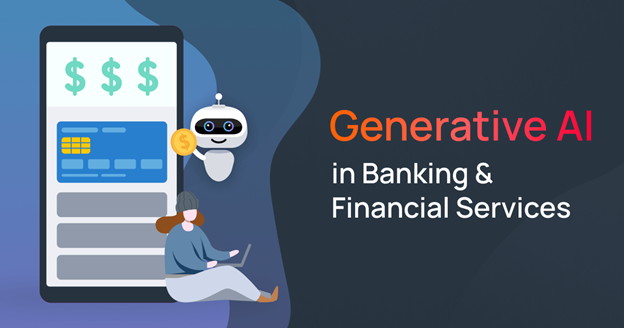The traditional financial business is experiencing a period of disruption with the growth and development of topics such as big data, blockchain, cryptographic currencies and artificial intelligence (AI), among others.
This impact is clearly manifested in several areas in general: credit rating or solvency, market research, personal assistants, asset management and fraud detection.
The financial sector currently uses AI technology to organize its operations, make investments and even control risks related to identity theft and other forms of financial fraud.
76% of banking service executives consider that the adoption of this technology is a top priority for their organizations to differentiate themselves in the market.

AI will gradually evolve from being a possible disruptive technology to completely transforming the entire business value chain in the financial sector. Currently, this software development services such as AI offers new products to the consumer, surpasses existing ones, increases the operational efficiency of business processes and serves to discover knowledge that leads to innovative business opportunities.
Artificial Intelligence in Finance
Banks have turned to artificial intelligence to automate manual processes, such as credit analysis. This means banks can offer loans faster than before. Additionally, AI is used to analyze large volumes of data to detect fraud and other anomalies. Nevertheless, using this tool allows banks to offer chatbot services and personalized financial guidance.
Another technology that has been used in financial markets is blockchain . Blockchain is a distributed ledger technology that allows transactions to be tracked securely and transparently. This technology is used to simplify and speed up complicated banking processes, such as international bank transfers, improving the security and transparency of financial markets.
This new technology has attracted many young and experienced technology investors, such as Generation Y (millennials). Whose generation has shown itself to be increasingly interested in using technology to improve the investment experience, that is, to automate complicated processes and to obtain more information about the financial markets. Additionally, this has been a great tool to help them make more informed investment decisions. This technology provides a more personalized investment experience, allowing investors to trade faster and more efficiently.
This new technology revolutionizes the world and is an important tool in financial management, helping companies make more effective and efficient decisions. It can be used to support investment decisions, analyze financial data and identify patterns of behavior that help predict trends. Additionally, AI can be used to help with market management, investment portfolio optimization, risk management, price prediction and fraud detection.
Although AI presents a set of potentialities that can revolutionize the economic and social panorama, it also presents challenges and obstacles that still have to be overcome. One of the obstacles is transparency in decision-making, as AI algorithms can be too complex and it is necessary to understand their decision-making. Internal R&D efforts are, for the most part, channeled only towards increasing the company’s performance and, in addition, digital transformation is carried out at a slow pace. In the digital transformation process, the implementation of AI requires structural changes in the company. An open organizational culture that allows collaboration between humans and machines is a success factor that allows you to benefit from AI in the long term. Regarding the issue of replacing functions performed by humans, AI will simultaneously replace some current functions and create jobs, while it is unable to reproduce the emotional part of human behavior, namely communication and the establishment of interpersonal relationships.
What is AI?
AI is defined as a simulation of human intelligence processes by machines, especially computer systems. These processes include:
Learning, which is the acquisition of information and rules for the use of information;
Reasoning, which is the use of rules to reach approximate or definitive conclusions and self-correction.
Some Key Areas for the Transformation of a Financial Business
Currently the use of AI is in a phase of impact on the financial sector.
Some areas of impact:
- Personal Banking —Use of personal virtual assistants specialized in finance and commerce which allow conversations with clients about their personal finances.
- Asset management —Today there are different companies that use AI algorithms to improve the management of financial assets. According to TechRules magazine, “Big data analytics provides the ability to better learn not only about the customer, but also any trends around them.” Currently, 26% of asset and wealth management entities use AI to make their major decisions, according to a report published by PwC.
- Credit rating —By definition, credit rating is the technology of automated systems with which a financial institution decides whether the credit application has sufficient guarantees of solvency. Unlike conventional methods, where typically 20 or 30 variables are involved, new AI techniques allow models to be built with thousands of variables. 7 Using AI, greater precision, automation and speed in decision-making can be achieved through the combination of algorithms and big data. In addition, it allows you to resolve with more information when the applicant has a credit history with little information.
- Fraud detection —AI can also play a role in preventing crimes such as money laundering. The computer systems used in the past lacked precision and generated multiple ‘false positives’ that implied greater effort and work for financial institutions. However, with the use of AI these problems are being eliminated. Bg data architect in the algorithmic engineering department of the Institute of Knowledge Engineering (IIC), it is considered that, “speed is key in fraud mitigation, especially in the banking sector.” ». 8 AI development focused on security and fraud offers an integrated view across all channels and portfolios. Intelligent case management, entity link analysis, AI, and machine learning methods such as outlier detection reveal hidden relationships and suspicious associations between your customers, accounts, and other entities across all lines of business.
- Virtual Customer Service Assistants ——In recent years, chatbots based on natural language processing and machine learning algorithms have become a powerful tool for banks to provide their users with a personalized experience. Through these assistants, users can resolve common questions and, in certain cases, obtain product recommendations or perform certain operations. With this, it is possible to automate communication channels with customers and make them available 24/7 in addition to automatically collecting information about interactions with users.
- Automated risk assessment —Some fintechs use AI and big data analysis to create credit profiles based on information provided by the applicant and data obtained automatically from the internet and social networks. Big data and AI allow a company to automate credit risk management analyzes and view financial statements in real time.
Main Artificial Intelligence tools in Finance
In short, we can list the main Artificial Intelligence tools in Finance:
Risk Forecast
AI tools can help banks predict and monitor risks in their portfolios. This is done through the use of algorithms to analyze historical and current data, predicting the future behavior of a portfolio or a market.
Investment Optimization
AI tools can help banks optimize their investments. This is possible through the use of algorithms to identify the best investment options from the available data.
Fraud Analysis
AI tools can help banks detect fraud by detecting suspicious patterns in financial data.
Pattern Detection
AI tools can help banks detect patterns and trends in financial data by identifying trends and patterns in the data.
Sentiment Analysis
AI tools can help banks assess customer sentiment towards the company by enabling analysis of data collected from customer feedback.
Now is the time to embrace AI to achieve digital transformation in the financial sector. This adoption will allow the redefinition of processes and the rethinking of products, services and user experiences. Therefore, these changes will allow financial institutions to remain relevant in a world that is changing at great speed. The application of AI tools in the financial sector is already a tangible reality that brings numerous benefits to market participants. However, it also presents a series of risks and limitations that must be known and managed in order to properly extract its full potential.





Leave a Comment